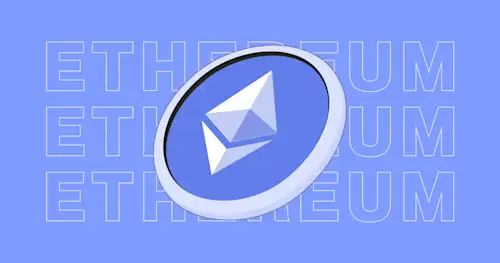Related Articles



In the ever-changing crypto landscape, new players are continuously emerging to challenge the dominance of established giants. One such rising star is Solana (SOL), a blockchain platform that has gained significant attention for its potential to rival Ethereum (ETH), the industry-leading platform for decentralized applications.
Solana has frequently been labeled the “Ethereum killer,” thanks to its emphasis on scalability and an efficient consensus mechanism that enables much higher transaction throughput than today’s Ethereum mainnet. However, the real-world story is more nuanced, and it’s important to explore both technical strengths and challenges as Solana battles for greater adoption.
Founded in 2017 by former Qualcomm engineer Anatoly Yakovenko, Solana was created to solve one of blockchain’s biggest pain points: scalability.
Bitcoin processes ~7 transactions per second (TPS)
Ethereum processes ~15–30 TPS
Solana advertises up to 65,000 TPS under ideal, theoretical conditions. In practice, Solana consistently achieves between 1,400 and 4,000+ TPS, still vastly outpacing most competitors.
This throughput is a game-changer for developers of DeFi protocols, NFT marketplaces, and Web3 applications requiring speed, efficiency, and low fees.
Solana’s competitive advantage lies in its hybrid consensus model combining Proof-of-History (PoH) with Tower Byzantine Fault Tolerance (BFT).
Proof-of-History: Time-stamps transactions before they enter the network, creating a verifiable order without requiring every node to communicate constantly.
Tower BFT: Adds security and finality while enabling rapid block confirmation.
This enables parallel transaction processing and results in consistently low transaction fees—typically below $0.00025 per transaction. By comparison, Ethereum’s Layer 1 fees can fluctuate between less than $1 and upwards of $30 during network congestion, though Ethereum Layer 2 solutions are narrowing the gap.
Ethereum pioneered DeFi and smart contracts but continues to face persistent scalability and cost issues. Even after “The Merge” in August 2022, which transitioned Ethereum to Proof-of-Stake, base-layer transaction throughput did not dramatically improve. High gas fees during peak usage continue to price out some users.
Ethereum addresses these limitations with Layer 2 scaling solutions (e.g., Arbitrum, Optimism) and by implementing innovations like account abstraction (ERC-4337), but Solana’s performance advantage is achieved natively, without reliance on extra layers.
Solana’s growth is visible in its expanding ecosystem, with hundreds of projects and millions of users. Prominent applications include:
Serum: A decentralized exchange (DEX) providing fast, low-cost trading.
Audius: An open-source music streaming platform empowering artists through blockchain.
Magic Eden: Leading NFT marketplace.
Solana Pay: Enabling fast, nearly free payments, e.g., for Shopify businesses.
The combination of fast transaction processing, low fees, and new features like a mobile dApp ecosystem and real-world integrations (e.g., Franklin Templeton’s government money fund on Solana) attracts both developers and mainstream businesses.
DeFi remains a leading use case for both Solana and Ethereum. Solana’s infrastructure lowers the barrier for building high-frequency DeFi dApps, whereas Ethereum, despite congestion and fees, still enjoys the broadest institutional and developer support.
While Solana’s technical achievements are significant, it continues to face criticism for centralization risks. Compared to Ethereum, Solana relies on fewer, more powerful validators, and a large share of the network is staked by a limited number of insiders. Past major outages and emergency interventions have highlighted the need for further decentralization.
Maintaining low fees and high throughput as adoption grows is a continuous challenge—one the Solana team says it is addressing with new validator clients, protocol upgrades, and infrastructure decentralization.
On the other side, Ethereum’s established ecosystem and robust network effects provide continued advantages, with a relentless pace of technical innovation aiming to solve present bottlenecks.
As competition for blockchain supremacy heats up, Solana stands out for its unmatched real-world speed, innovative consensus design, and rapidly growing ecosystem. While Solana is a formidable contender, dethroning Ethereum will require sustained growth in adoption, further decentralization, and addressing incumbent advantages.
Ethereum, meanwhile, continues to lead the DeFi sector and serves as the foundation for many of the world’s largest dApps and DAOs. The evolving rivalry between these two blockchains is pushing the entire industry forward, benefiting users and accelerating the pace of innovation.
Feature | Solana | Ethereum |
Consensus | Proof-of-History + Tower BFT | Proof-of-Stake |
Real-World TPS | ~1,400–4,000+ | ~15–30 |
Max Theoretical TPS | 65,000 | ~100 |
Transaction Fees | <$0.00025 | $1–$30 (Layer 1) |
Scaling Strategy | Built-in optimization | Layer 2 solutions |
Decentralization | Still evolving, some concerns | Broad, well-established |
Ecosystem | DeFi, NFTs, gaming, payments | DeFi, NFTs, DAOs, broadest |
Sign up for an account on the Flipster website or by downloading the Flipster app (Android or Apple).
Click the [Trade] tab.
Search for SOL, and click on it.
Select the leverage (up to 50x).
Select either a Trigger Order or Market Order.
Input the amount of crypto you wish to trade, or select a percentage of your available funds to use.
Once you have confirmed the details, click the [Long] or [Short] button to open a position.
SOL Perpetual Swap Contract Specifications
Disclaimer: This material is for information purposes only and does not constitute financial advice. Flipster makes no recommendations or guarantees in respect of any digital asset, product, or service. Trading digital assets and digital asset derivatives comes with a significant risk of loss due to its high price volatility, and is not suitable for all investors. Please refer to our Terms.

